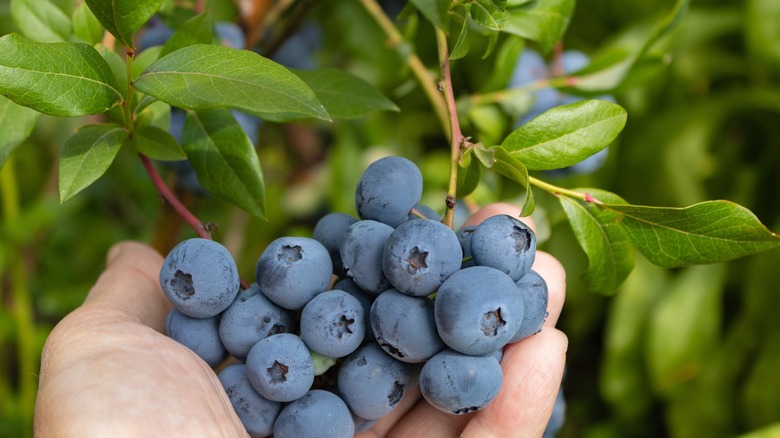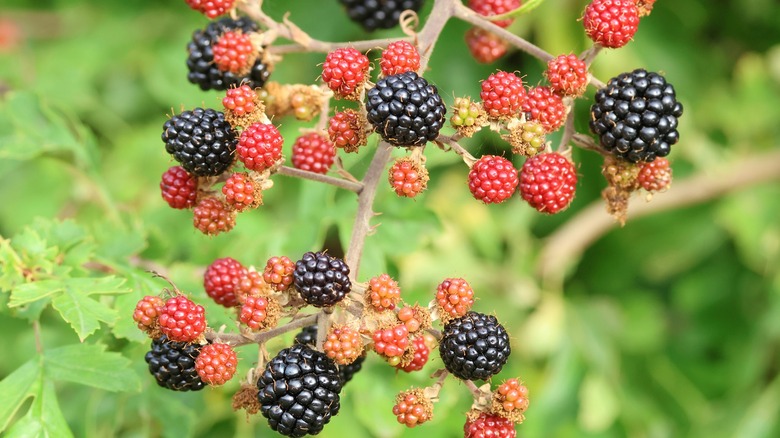Memorizing This Cute Poem Could Save Your Life When Picking Berries While Camping
Before there were shops, online deliveries, and endless preservatives, our ancestors lived off the land — and some of them knew a lot about their native plants, because they had to know what was safe to consume and what might help with specific ailments. Most of us lost that knowledge along the way, but we can re-learn how to identify plants and find out what is a delicious, healthy snack — and what is deadly.
If you're camping at one of the most underrated national parks in America and you fancy a wild treat, you will probably come across a bunch of berries and wonder if they're edible or not. Without taking a foraging course or buying a book, there is a simple (although not foolproof) method you can use to steer clear of poisonous berries. It comes from a mnemonic poem, and it goes as follows: "White and yellow, kill a fellow. Purple and blue, good for you. Red ... could be good, could be dead."
Basically, if you come across a white and yellow berry, don't touch it as it's probably toxic. If you find a purple or blue berry, there's a good chance it's edible, and red berries can go either way. Wild raspberries, blackberries, and blueberries, for example, fit the rhyme and are safe to eat. If you've picked some edible berries, remember to wash them in your DIY camping sink.
Which wild berries are edible — and which are poisonous?
As mentioned, this poem is helpful, but it won't cover every single berry you find in the wild. "White and yellow are generally to be avoided, but that doesn't mean that berries of other colors are edible," explained one Reddit commenter. "Learn what the entire plant looks like, not just the part you are interested in consuming, and go off of at least 3 defining characteristics."
Some edible berries (note: edible doesn't mean they'll taste nice right off the bush — many are very bitter or sour if not cooked) in the U.S. include chokeberries, autumn olives, blackberries, blackcap berries, blueberries, buffalo berries, cranberries, blackcurrants, and elderberries. Poisonous berries to avoid include holly berries (the red ones that are frequently used for Christmas decorations), mistletoe, Jerusalem cherries, bittersweet nightshade, pokeweed berries, Virginia creepers, and the berries found on ivy. If you Google them, you'll see that one or two are yellow or white, but many are red, black, or blue, and could easily be mistaken for another type of berry.
Some berries are fine when cooked, but shouldn't be eaten raw (like elderberries), while others may not be poisonous when consumed fresh, but taste very unpleasant, and are bitter, and/or significantly dry out your mouth. If you're unsure and you really need/want to eat the berry, test it by licking one berry or chewing without swallowing, and observe your body's reaction. You can also try eating one berry and see if your body has a response. This might make sense if you're lost in the wilderness, but if you're not literally starving, it's always best to triple-check what the berry is with an app, like iNaturalist. While you're exploring the wild side of life, make sure to protect yourself with this natural alternative to bug spray.

